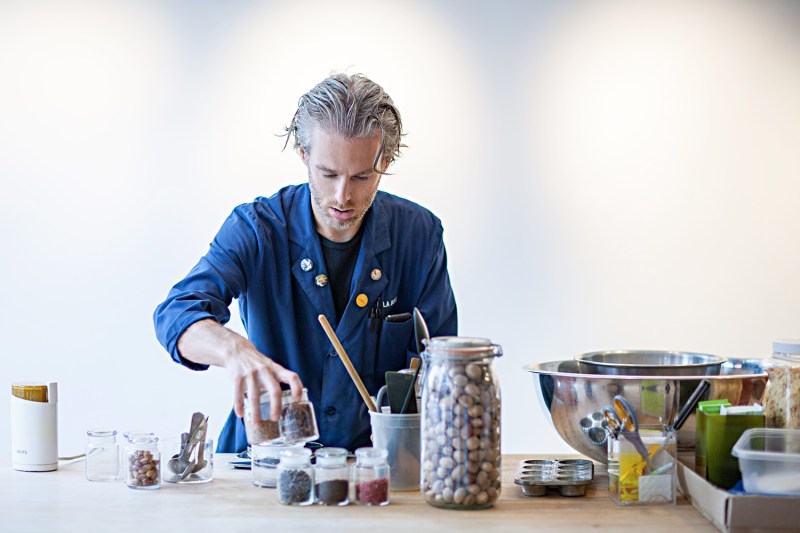
A spice blend can make or break a meal. Yes, a properly cooked piece of chicken or steak can taste delicious on its own, but there’s just something about the multiple levels of flavor introduced by a mix of spices that can elevate any meal to new heights.
Sure, you can buy one in a store — go to any grocery store and you’ll see half an aisle dedicated to everything from lemon pepper to pumpkin pie spice and beyond — but what fun is that? There’s not much artistry in buying a bottle of Montreal Steak seasoning (tasty as it may be) and calling it a day. We here at The Manual prefer to do it our own way.
To figure out exactly how to do that, we had to go to the best, which is why we sat down with Lior Lev Sercarz, founder of the New York City spice and biscuit store La Boîte and author of the book The Spice Companion (Clarkson Potter 2016), to find out not only how to make a good spice blend, but why.

Before that, though, we had to ask: As a spice person, what was he into lately and, more importantly, what would his desert island spices be? (Ours? Salt for rimming margaritas and sugar for making daiquiris, naturally.)
On the subject of new interests, Sercarz says that he’s been really into California bay leaves. “The leaves have a great floral and resin nose,” he adds.
As for spices and spice blends, Sercarz says he’d bring salt, Urfa, and cumin with him. “Salt is probably one spice found in nearly every kitchen, but it’s important to remember that not every salt tastes as salty as the next. It’s extremely diverse with varieties ranging from fine sea salt to fleur de sel and Gray salt — along with heat and acidity, it is one of the basic flavors in a great dish.”
As for Urfa (aka Urfa biber), it is “a smoky-sweet, mildly hot chile. I include it on the short list of ‘everything spices,’ meaning it can be added to literally everything, whether raw or cooked, sweet or savory. Fair warning — you might become addicted!”
And finally, cumin. “Cumin is an intensely aromatic seed — its leathery, savory notes create the sensation of grilling, while its salty notes pleasantly balance sweet or sour dishes. It could last you a while on a desert island because of its intensity. I recommend using sparingly.”
For spice blends, Sercarz chooses three from La Boîte’s selection: Pierre Poivre, Cancale, and Izak.
“Pierre Poivre blend is an eight-pepper blend with tangy, sweet, sour, and floral notes, which can be used to season anything from wild game and grilled steaks to thick-cut vegetables. It is named for the French missionary, Pierre Poivre, who helped disrupt the spice monopoly so that spices could be made more accessible to everyone. A true spice rebel!” Sercarz says. “If I had to explain what I am trying to achieve with La Boîte, it has a lot to do with this guy.”
The next blend, Cancale, “can be added to just about anything, combining fleur de sel with a hint of orange peel and fennel seed.”
Izak, he adds, is “a harissa-inspired dry blend that uses sweet red chilies in place of hot peppers. It covers a lot of bases because it goes great with beef, crustaceans, fish, eggs, and pasta!”
(At this point, we’re rethinking our own will to make our own blends when these sound so good. But, onward we go.)
As it turns out, Sercarz says that building a spice blend is all about telling a story.

“A spice blend has to have a good concept or idea behind the creation. I like to think that it has the power to tell the story of a place, person, memory or a dish,” he says.
For Sercarz, a blend can’t be completed in a specific time. Some can be made in as little as 10 minutes while some can take up to three months to perfect. “It varies on the complexity of a blend. I begin with a basic idea and then identify the inspiration, textures, and flavors,” he adds.
The biggest rules, he writes in The Spice Companion, are to keep it simple, have a good idea about what you want to do before you start (no one wants to waste spices when you don’t have to), and deliver a flavor profile that is not only exciting to you, but one that is complex, layered, and balanced.
As an example, think of how you like your current go-to steak rub. Is it salty? Spicy? Is it coarse or fine? Do you wish it were a little sweeter, perhaps to caramelize into a bark on the outside while cooking? Start from those points when making your blend. Then, Sercarz suggests in his book, try and think of three other items that same blend can be used on. If the blend is versatile, chances are it’s going to be good.
Sercarz also suggests investing in a spice grinder and buying certain spices whole. The caveat to that being if you know a reputable spice purveyor, then ground spices are a-okay in his book — you just don’t want to, for example, buy ground black pepper which has had olive pits ground up and blended in for filler.

If you are grinding your own spices, you’re able to add a texture layer to your spice blends that you probably wouldn’t get if you bought pre-ground spices at the store.
Finally, Sercarz writes, be careful in how much you add at any given time. Some spices are able to stand in the spotlight while others are not. It’s easier to add a little more at a time than it is to take spices out of a blend.
You can pick up The Spice Companion here. If you still don’t want to make your own spice blend (though we suggest trying it at least once, just to check it out), you can pick up Sercarz’s blends on the La Boîte online store.





